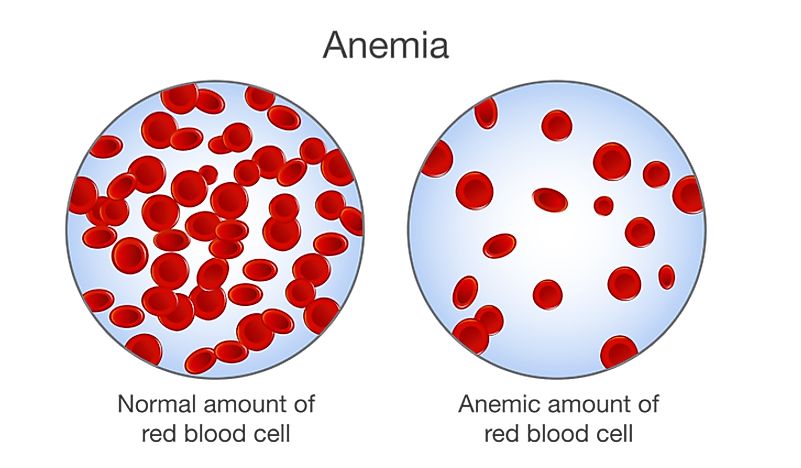Anemia in Children - Prevalence Around the World

The majority of children in a population with anemia is characterized by iron-deficiency and occurs in the developing world. In a population where this occurrence is the norm, there is an increased risk of child mortality. This disorder can also affect the cognitive and physical development of children.
Typical physiological changes leading to anemia are caused by impairment of tissue oxygenation. The acute loss of blood would present a more dramatic result in these individuals. However, in typical anemic individuals, changes are slow depending on the individual’s age and conditions. Inherited anemia, malaria, tuberculosis, HIV, and helminth infections are all considered causes of this disorder.
Highest Incidence Countries
In a large number of sub-Saharan African nations, more than 50% of the children above five years of age suffer from anemia. Tropical anemia is often linked with iron deficiency and malaria. At the infant stage, the majority of African children contract malaria and as a result become anemic which continues to childhood. Limited human and economic resources are seen as the widespread cause of anemia in Africa. The problem is further exacerbated with blood transfusion that may contain blood-borne pathogens and HIV. Other factors are malnutrition, parasites, and hemoglobinopathies. The mortality rates in African countries among anemic children under five years of age with sickle-cell anemia is quite high. The figures do not include unreported cases or undiagnosed anemia in children under five years of age.
Burkina Faso ranks on top of African countries with the highest incidence of childhood anemia at about 86% of children under five years of age with the disorder. Mali is second with about 80% of its children having childhood anemia. Senegal is third with about 79% of children in its population suffering from anemia. Next are Ghana, Guinea, and Niger, three countries in Sub-Saharan Africa that have the same percentage of its children with the anemia condition at 76% of its population. Cote d'Ivoire also has the same disorder in its population’s children at about 75% rate. Sierra Leone and Chad are also two other countries in Africa that share the same percentage of children with anemia at 74% rate. The Central African Republic and Liberia located in Africa are also burdened with about 72% of its children in its population with the anemia condition.
Measures Against Anemia
International organizations such as the WHO working with African governments have taken anemia seriously and taken counter measures to reduce the occurrence of this disorder. The interventions are preventive in nature such as insecticide spraying and insecticide-treating mosquito bed nets in malaria-infested countries. Childhood anemia often begins in the womb, so preventive measures are also taken in chemoprophylaxis for babies and IPT and antimalarial drugs for pregnant women.
Vitamins, antiretroviral treatments, de-worming, and iron supplements are all administered to children on a case-to-case basis. These treatments are important as anemia, in most cases, occurs as a result of changes in iron metabolism after infectious disease have been contracted. Facts show that in malaria-infested countries, the prevalence of anemia is at a high rate.
Countries With Highest Rates Of Anemia Among Children
| Rank | Country | % Of Children Under 5 With Anemia (2011) |
|---|---|---|
| 1 | Burkina Faso | 86 |
| 2 | Mali | 80 |
| 3 | Senegal | 79 |
| 4 | Ghana | 76 |
| 4 | Guinea | 76 |
| 4 | Niger | 76 |
| 5 | Cote d'Ivoire | 75 |
| 6 | Sierra Leone | 74 |
| 6 | Chad | 74 |
| 7 | Central African Republic | 72 |
| 7 | Liberia | 72 |
| 8 | Guinea-Bissau | 71 |
| 8 | Togo | 71 |
| 8 | Nigeria | 71 |
| 8 | Mauritania | 71 |
| 9 | Congo, Dem. Rep. | 67 |
| 9 | Mozambique | 67 |
| 10 | Equatorial Guinea | 66 |
| 10 | Malawi | 66 |











